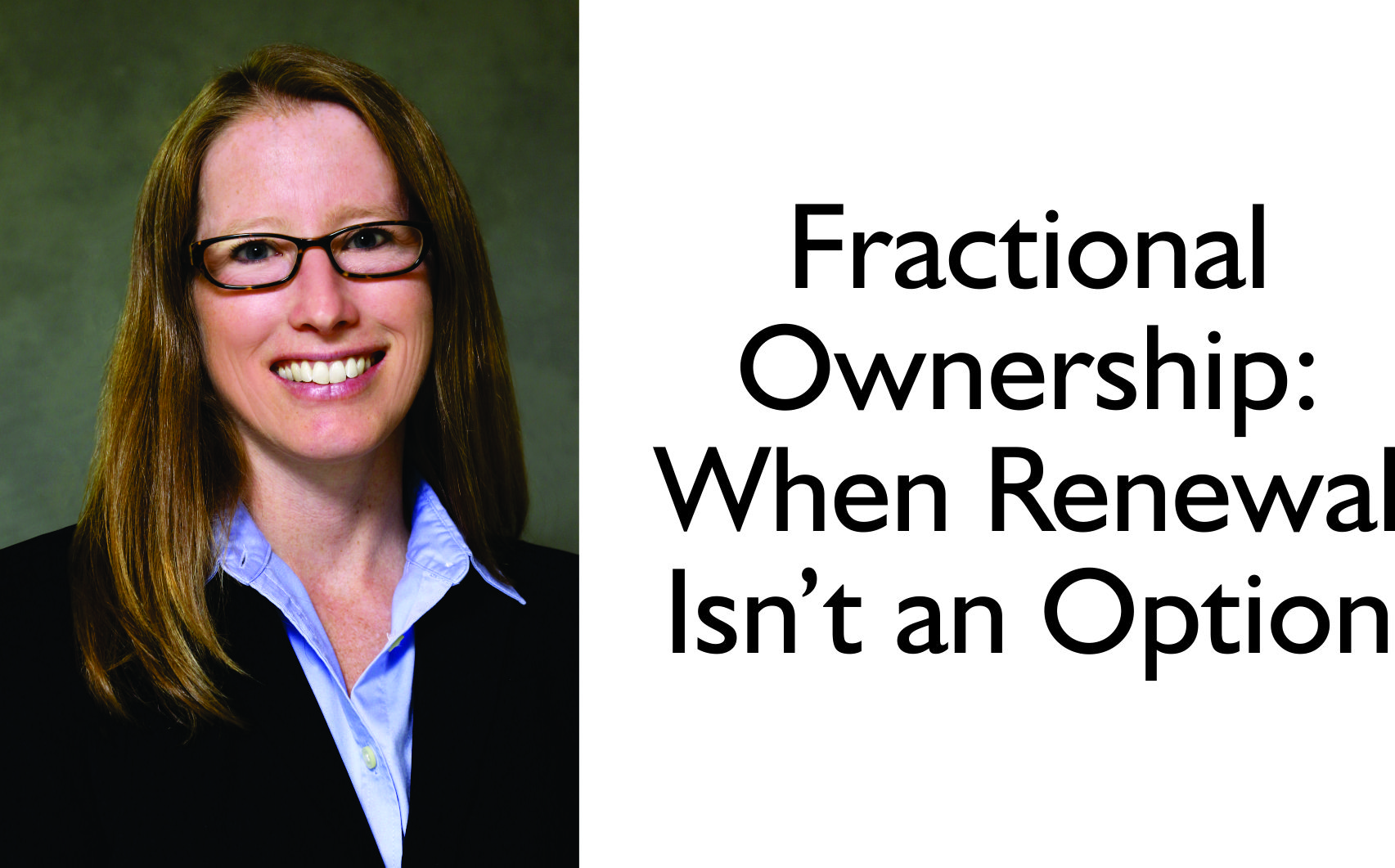Fractional Ownership: When Renewal Isn’t an Option
 Fractional Ownership: When Renewal Isn’t an Option — Originally published in BusinessAir Magazine, June 2016, Volume 26, No. 6.
Fractional Ownership: When Renewal Isn’t an Option — Originally published in BusinessAir Magazine, June 2016, Volume 26, No. 6.
If you follow the fractional industry, you are aware of the orders for new aircraft submitted by Flexjet and NetJets over the past few years as these fractional providers refresh the aircraft in their fleets. For aircraft manufacturers, these orders are always welcome. As the new aircraft are introduced, the older model types are retired and sold out of the fractional fleet. For fractional customers and existing owners, these orders often bring new exciting offerings.
Fractional owners who own fractional shares on a retiring aircraft must sell back their fractional interest at the expiration of the management agreement if it is not being offered for renewal. With the current depressed valuations of aircraft, the fair market value for fractional shares being retired is disappointing and sometimes shocking to the fractional owner. If a fractional owner wants to continue fractional ownership with the same provider, the owner will have to contribute additional capital to cover the difference between the fair market value of the current share on the retiring aircraft and the new share on an aircraft being introduced to the fractional program. When an aircraft is retired from a fractional fleet, the fractional owner is forced to make a decision on what to do next, since maintaining the status quo is not an option.
The choices are as follows:
1. Purchase or lease a fractional interest in a different model type from the same provider.
2. Purchase or lease a fractional interest in a different model type from a different provider.
3. Purchase a whole aircraft.
4. Discontinue fractional ownership and move to a different mode of flying privately. The options available have evolved, and many of the new options such as membership programs, jet cards, regional fractional providers or co-ownership providers either didn’t exist or may have changed since the original fractional interest was purchased.
5. Move away from any commitment in favor of ad-hoc charter or block charter.
Regardless of what option is selected, it will mean change. When a change is required and when the last fractional share was purchased years ago, the fractional owner needs to review and explore all the options in order to ensure that the go-forward plan makes the most sense. However, while consultants and attorneys can provide analysis of the various offerings on the market, some of the decision will certainly be made not on facts but on emotions. How has the service been in the current program? Do the owner service representatives already know your flying needs and offer excellent support? Do you take advantage of any extra benefits offered by the program? The answers to these questions may affect a fractional owner’s motivation to look beyond their current provider.
Many of my clients simply wish they could maintain the status quo. They like their provider and their aircraft, but they don’t want to invest more capital and don’t want to pay higher rates. Since the fractional fleet is fluid and owners seldom travel in the aircraft they actually own, the allure of ownership of a new aircraft interest isn’t as strong as it is with whole aircraft ownership. Regardless of the desire of the fractional owner, however, status quo is not possible when a particular model of aircraft is being retired from a fractional program. Therefore, when considering the options, a fractional owner should be aware of the following:
1. The industry has evolved. The offerings have changed. What was the best choice when the fractional interest was originally purchased may or may not be the best choice now.
2. If the provider has met or exceeds all expectations, and a change in aircraft type is the only planned change, the fractional owner should strive to obtain the best terms being offered by the current provider.
3. While the traditional fractional program still exists, there are new plans and programs continuing to emerge month after month. Understanding the available market options at the time of aircraft retirement is key.
4. 2016 is certainly a buyer’s market. The old data which indicated that usage should be around 400 hours per year before considering the purchase of whole aircraft is no longer accurate, based on the rising cost of fractional ownership and the depressed value of pre-owned whole aircraft prices.
5. There are many independent experts who can review past utilization and advise on the best private aviation operations. If you don’t want to learn a new industry and decide to hire someone to review the available options, it is important to ask if that person receives any referral fees from the various providers. Having an independent, unbiased individual will allow for the most analytical data. However, no outside consultant can fully grasp the emotional aspects of an owner being with a certain provider.
If status quo on fractional ownership isn’t available and change is required, it is important to invest the time or hire someone to obtain the most favorable terms available with the selected provider. Even if staying with the current provider is the only option the fractional owner would consider, working towards getting the best terms possible will take time and effort. Making sure this is done well in advance of the contract expiration date is important to insure continuity of service for your travel needs.
Please contact Amanda Applegate at 310-392-5200 or aapplegate@aerlex.com.
